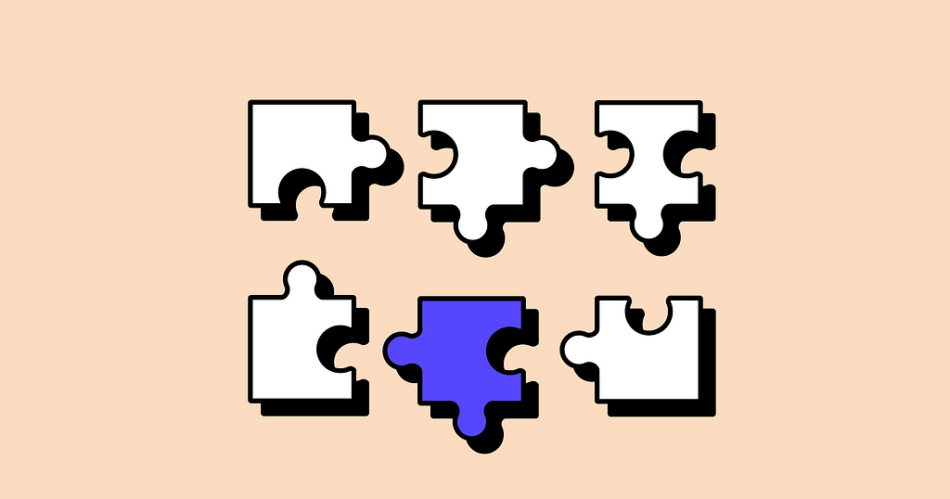As designers, we should challenge fragmentation rather than foster it.
Illustration by Kristina Gushcheva-Keippilä
Jakob Nielsen thinks that accessibility is too expensive. Furthermore, he claims that the accessibility movement has been a “miserable failure.”
Although Jakob Nielsen’s recent newsletter aimed to explore AI as a tool for supporting designers in creating accessible experiences, I think it primarily reveals much about his belief system. He writes:
“Where I have always differed from the accessibility movement is that I consider users with disabilities to be simply users.”
Jakob Nielsen is right — he is not like all those accessibility advocates. In fact, I find his interpretation of the impact of accessibility as a movement throughout the newsletter piece to be both dismissive and contradictory.
In the newsletter, Nielsen argues that it’s not feasible to create experiences that cater to everyone’s needs. “This will never happen, so let’s forget about an unreachable ideal,” he writes.
Of course, as designers, we must recognise the limits of our abilities to match all individual experiences. What we can do, however, is learn from those experiences as much as we can — and continuously present solutions that challenge barriers.
Instead of learning from the complexity, though, Nielsen suggests giving up trying.
Simultaneously, Jakob Nielsen prompts us to “think dollar signs” when discussing certain groups of people that he considers to be “exceptions” in his accessibility paradigm. Thus, lived experiences become commodities, particularly when the focus is more on cost-efficiency than on meaningful and systemic change.
The key proposition in Jakob Nielsen’s writing is to move away from the model of developing common experiences towards total personalisation. He writes:
“In this second-generation generative UI, the user interface is generated afresh every time the user accesses the app. Most important, this means that different users will get drastically different designs. This is how we genuinely help disabled users. But freshly generated UIs also mean that the experience will adapt to the user as he or she learns more about the system. For example, a more simplified experience can be shown to beginners, and advanced features surfaced for expert users.”
Ironically, these ideas contradict several of Nielsen’s own usability heuristics. Conceptually, this implies that recognition and consistency are disregarded every time a person uses such a hypothetical service.
What about those people who rely on consistency and predictability? What about the ability to share same experiences among people of diverse abilities? Do we really need to divide our already fragmented world even further?
Jakob Nielsen seeks to distance himself from a movement he considers to be a failure. His conclusions align strangely with the long-standing sentiments in accessibility discourse: debates about cost-efficiency, the commodification of disability, and the intentional misinterpretation of the movement’s principles, goals, and methods.
I, as many others, feel puzzled that these statements, some of which resemble the most common accessibility myths, come from one of the most recognisable figures in the field of UX. In this light, I think it is important to not underestimate the impact that his views might have.
Per Axbom published an excellent analysis of Nielsen’s writing which precisely captures all the inconsistencies and contradictions. There’s hardly anything else that I could add, yet I couldn’t help but wonder: where do we go from here?
I view Inclusive Design Principles as a straightforward, cohesive, and actionable set of design methods. While they are purposefully broad, they effectively encapsulate the core of accessibility as a movement. To briefly summarise the key principles:
We should provide comparable experiences that allow people to complete tasks in ways that suit their needs without undermining the quality of the content.We should deliver a valuable experience to people regardless of their circumstances.We should present experiences consistently within the interface to reinforce their meaning and purpose.We should allow people to access and interact with content in their preferred way.We should consider providing different ways for people to complete tasks, especially those that are complex or non standard.We should help people focus on core information by prioritising it within the content.We should consider the value of features and how they improve the experience for different people.
These principles provide a foundation for navigating solution and opportunity spaces. Can we ethically incorporate AI to address various design challenges, including accessibility? It could be possible, but it requires a people-centred, ethical, and comprehensive design approach.
There’s undoubtedly much to improve in the digital product space. However, as designers, we must adopt a systems-thinking approach. We should strive to understand, learn, and challenge barriers.
Shared experiences and collective action are crucial for us to thrive as people, in both physical and digital spaces.
We should challenge fragmentation, not foster it.
Kristina (she/they) is a design leader based in Finland. Kristina writes about inclusive design, being neurodivergent at work, and systems thinking.
Links and references
Jakob Nielsen: Accessibility Has Failed: Try Generative UI = Individualized UX
https://jakobnielsenphd.substack.com/p/accessibility-generative-uiPer Axbom: On Nielsen’s ideas about generative UI for resolving accessibility
https://axbom.com/nielsen-generative-ui-failure/Inclusive Design Principles
https://inclusivedesignprinciples.org/Microsoft Inclusive Design
https://inclusive.microsoft.design/Accessibility Myths
https://a11ymyths.com/Nielsen Norman Group: 10 Usability Heuristics
https://www.nngroup.com/articles/ten-usability-heuristics/
In response to Jakob Nielsen was originally published in UX Collective on Medium, where people are continuing the conversation by highlighting and responding to this story.





